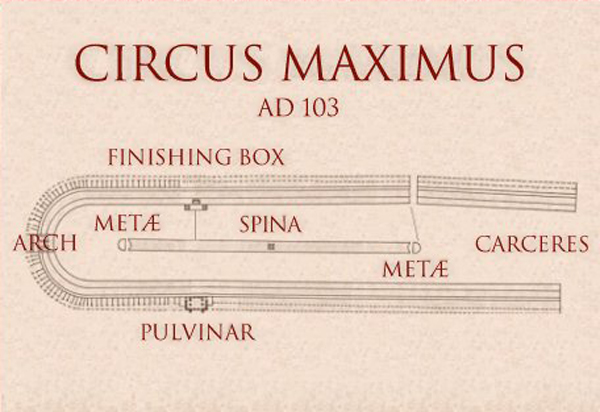

Traditionally extending back to the time of the Roman kings, the Circus did not assume its final shape until the work of Julius Caesar and Augustus, and the massive reconstruction of Trajan in AD 103. There were gates for as many as twelve chariots, rebuilt in marble by Claudius, who also covered the metae with gilded bronze plaques (Suetonius, Life of Claudius, XXI.3), and no other circus in the Roman world could accommodate more.
To permit a fairer start, the spina and the right-hand lane were angled slightly and the distance to the first turning post increased so that all would have an equal distance to the break line, at which point the chariots could leave their lanes and cut to an inside position. The chariots were expected to reach the line at approximately the same time and to allow for such congestion at the beginning of the race, the distance between the podium wall and the spina at the white line was almost forty feet wider than on the other side of the metae.